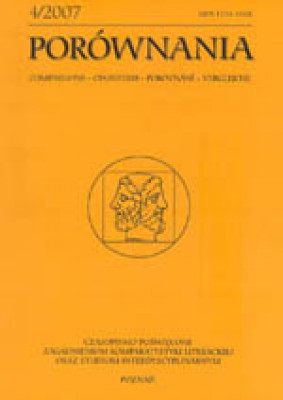Ukraińskie kino lat 90. XX wieku w poszukiwaniu tożsamości narodowej
The Ukrainian cinema, starting from the 1930s and with a short Chrustchev glasnost’, was subject to strong russification aimed at a consistent eradication and destruction of the Ukrainian national identity. It is only towards the end of the 1980s and the beginning of the 1990s – along with the fall of the Soviet empire and the Ukrainian political, national and cultural rebirth and on the wave of widespread discussion about the state and role of the Ukrainian national identity – that the Ukrainian cinema brought a series of promising domestic cinema debuts. Unfortunately, the artists having their debut in the days of transformation of the 1930s did not manage to formulate their own distinct artistic platform. In addition, scant state support offered declarations rather than real and effective [aid both in the legal and the financial areas], which did not contribute to the active development of domestic cinematography. A complex linguistic situation that devalued the Ukrainian language to the advantage of the Russian language, had an adverse effect on the Ukrainian cinema of those days [including the Ukrainian TV, radio or the press]. Both these and a number of other factors led to the close death of the national cinematography in Ukraine towards the end of the 1990s. The situation changed only with the change of power in 2000 when V. Yushchenko’s government financed all the films planned for 2000. At the time the public was able to see films such as Molytva za het'mana Mazepu directed by Yurij Illienko, Mamaj directed by Ołes’ Sanin, Druhoriadni liudy directed by Kira Muratova, or Chorna rada directed by Mykola Zasieiev -Rudenko.
| Article Title | Type | Size |
|---|---|---|
| 3.3. Matusiak | [pdf] | [125 KB] |
